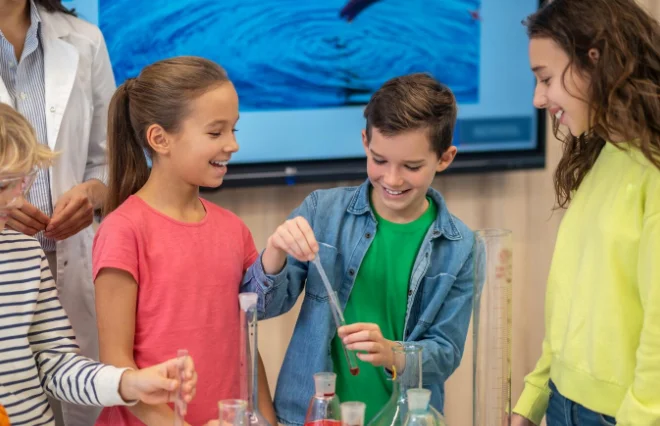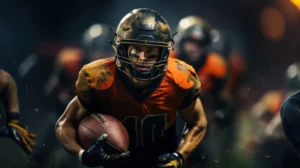How Can Schools Spotlight Donors During Big Events?
Visualize this: it is the annual fundraising of your educational institution, and you can feel the high level of energy in the hall. In every school community children, parents, teachers, and other members gather to enjoy the historical triumphs and to promote the advancement of education. Nevertheless, you notice something defective as you scan the decorated bright hall: a proper means of appreciation to the generous donors who make it possible for some events to come to life and be shared among families and friends.
If you have organized a school event before, you must have asked yourself this question: “How do I recognize the contributors, and why is it a challenge?” You don’t have to assume thanking donors does not help them; it helps you achieve your mission at your school. Acknowledging your donors, if done rightly, converts the gloss of a thank you into a memorable experience that encourages ongoing and additional support for the cause.
Importance of Public Acknowledgement
Before cementing specific methods of acknowledgement, one may want to ask the question: Why is donor appreciation such a big deal? When you recognize donors at banquets or any of the big functions, you are doing more than a simple thank you; you are planting a seed of appreciation in your whole school.
Donor acknowledgment, however, serves several functions beyond the reason for a function itself.
- First, it reassures existing donors that their effort is appreciated, thus greatly reducing the chances of them walking away. There is a certain importance in seeing one’s name associated with a cause they believed in, more so when it is done in the presence of one’s peers and society.
- Moreover, celebrating donors in public helps in future donations when the donors leave a venue. Every individual would want to associate with a purpose for which many call over oneself, and to see positive recognition that comes with contributing brings them to attention. The cycle tends to increase involvement of participants in other subsections of fundraising in subsequent years.
Innovative Mechanisms for Display and Recognition
One of the easiest ways of appreciating people who donate is through the use of visual displays that are not only clear but purposeful.
- For example, create a gratitude wall that carries the names of donors together with the photos of the students the donations are benefiting. This way, gratitude through recognition and appreciation becomes easier since there is an already established link between supportive and granted action, and such gratitude becomes warmer and more understandable.
- Whereby, some create displays based on the theme of the occasion. For example, when organizing STEM activities, come up with an innovative arrangement that uses some of the gadgets available when explaining the enhancement made on the dodges due to the donation of the donor. Incorporate the use of LEDs and other dynamic props to present sliding images of the children and people making use of the gifts. At the same time, interactive displays help to create a buzz around the event.
- With a ‘donor tree’ that contains every leaf as the donor’s name and leaves each guest with a brief message of what education meant to each contributor, there’s no need for icebreakers because everyone lets the hat be under control.
Taking Recognition to the Next Level with Innovations in Technology
Today, most schools possess innovative technologies that can enhance donor appreciation to another level. In this regard, a donor digital display strategy is effectively utilized in getting rid of existing practices and ensures that recognition is at unprecedented levels for all those involved.
- One advantage of digital displays over other forms of appreciation is flexibility, which cannot usually be achieved with printed content. Similar to a video, you are able to create more effective appreciation campaigns that feature donors, images of students present in their classrooms, and the progress of fundraising efforts in real time. If required, these displays can be modified during the event to accommodate new donors or recognize specific accomplishments as they occur.
- You could also use QR codes to take your donor recognition a step further by incorporating “thank you” videos made by the children and teachers and linking to them from the code. Each time a donor’s name comes up on the screen, they can scan their smartphones for additional auditory and visual recognition that demonstrates the impact of their name on the screen. Such a combination of different functions, namely, public recognition and personal relation, produces great emotional feedback.
- Then social media connectivity helps boost recognition by stretching the party beyond the physical space. Furthermore, invent a particular hashtag for the event so the followers can also contribute by posting pictures of donor displays and mentioning the sponsors. This extends the length of gratitude after the function, as appreciation is expressed to donors long after the event has taken place.
Creating Efficient Donor Recognition Systems for Events
In some cases, donations are not equal, and this should be reflected in recognition towards the donors, but without disrespecting any of them. Creating a proper donor tier display for school functions helps to make the appreciation seem just and helps to increase contributions.
- The first step is to determine the exact donation levels and create interesting and meaningful names for them that are relevant to the image of your school. Instead of the common and boring ‘gold, silver, and bronze,’ have titles such as ‘Champion for Education,’ ‘Civil Education Activist,’ and ‘Builder for the Future.’ The above rank names seem personalized and in tune with the educational structure of the school in question.
- Awards for each tier should be different and fit within the amount donated, but at the same time there should be nothing that could make the lower-tier donors feel awkward. Those at the top of the ladder may have their names in the prime space of the walls or banner, be mentioned in speeches, and be given better seats at the dinner table. Medium-range donors might also be highlighted in another display and recognized as a group within the program, while low-end donors might simply have their names included in all the materials.
Take note that the aim is to appreciate everyone in the best way possible and naturally foster and motivate increased donation levels. Watching people being acknowledged at higher levels will trigger reinforcement; many people will be more than happy to donate more the next time.
Creating On-Stage Recognition Opportunities
Static displays are nice, but they never replace the impact of a live recognition when the event is in progress. They create peak emotions that the audience carries home and take advantage of storytelling, keeping donors engaged in the mission of the school.
- Keep all these moments short and sweet rather than having a single long announcement at any point of the program. There could be a part of the program where you start with a thank you to all donors and then go on to the things that need them. When addressing new playground facilities, for instance, seamlessly integrate appreciation of the donors who provided the support.
- Such recognition exercises are most effective when they involve students. Furthermore, such presentations bring a human touch, which no adult manager can make up for. Practicing with a handful of eloquent pupils, ask them to present some examples and narratives of how certain donations affected them. When a student stands up and talks about how the new laboratory facilities and devices increased his interest in learning chemistry, or how the new books in the library inculcated in her a love for literature, the message is nicely hammered home throughout the hall.
How to Use the “Event” to Foster Loyalty
Good donor recognition at such events should be considered an added tool of relationship building rather than being the primary activity. It goes beyond acknowledging gifts and past behavior and is about keeping personal ties and protecting the school’s interests going forward.
- After debriefing donors, craft carefully worded written messages and remind them of certain moments in the recognition showcase. If a specific donor was engrossed in listening to a particular student and was involved with this information that was displayed, include these points in the letter of appreciation to that donor. It conveys the notion that you appreciate them just the way they are and are not merely looking at them as potential funders only.
- Take photographs and shoot videos of your recognition activities and cover these with articles in the newsletter, on social media, and in the materials for future donors. Donee enlargers can remain in communication with you because they see various external renderings of their current support to your institution.
- If possible, options should be made available to these donors, with privileges in connection with the university even in the absence of a major event at a particular period. This may include invitations to some classroom lessons, which the donors must attend, or invitations for performances attended by fewer people, with the performances being about the students, among other smaller events. Such activities will ensure the continuity of relationships while at the same time allowing space for informal appreciation performances.
Conclusion: Transforming Every Donor into a Superstar
Acknowledging donors in formal meetings such as award-giving ceremonies is not a matter of politeness; it is about a vision that makes education a constructive activity, valuing appreciating everything good in it. Never will it be better when the recognition of your warm-hearted donors happens in a decision-like way; this would only enhance people’s appreciation of you and the kind of goodwill you give.

Deepak Sharma
Namaste! I’m Deepak Sharma, the creative mind behind SocialFunda, your go-to hub for Facebook bios, captivating captions, Instagram bios, and a treasure trove of Hindi Shayari. As a digital enthusiast, I am passionate about curating content that adds a touch of flair to your online presence.







